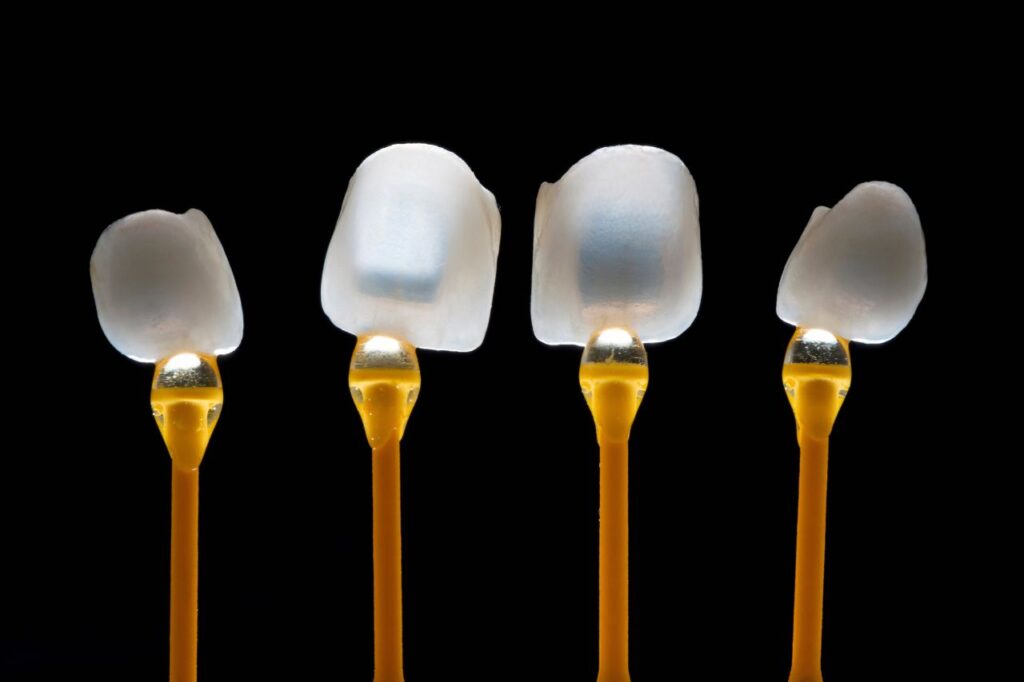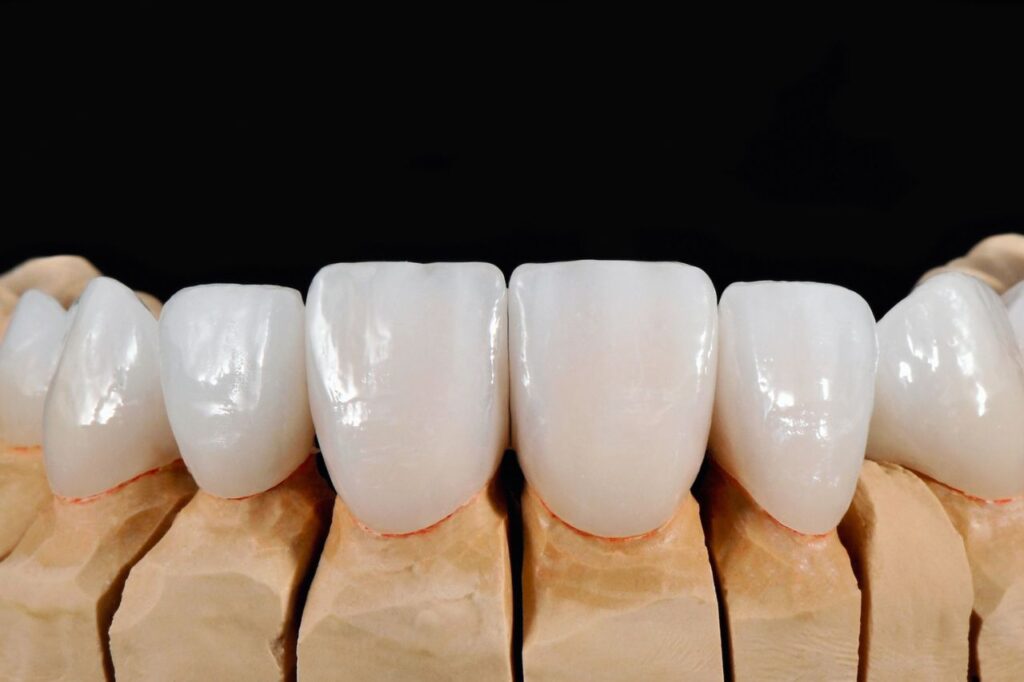Temporary Veneers: Benefits, Why You Need Them, and How It Looks
Are you thinking about getting veneers? Perhaps, you are considering temporary veneers. You probably know that it is a big decision. After all, there are so many things to consider. You’ve likely heard of permanent dental veneers or porcelain veneers, but temporary veneers are less invasive, less painful, and more affordable. Similar to a mouth guard, these veneers are clip-on veneers.
These removable veneers easily slide over your teeth, hiding any imperfections or issues in your smile. Trial veneers can give you a beautiful, stunning, and natural smile without blowing your budget. Isn’t that great?
In This Article:
- What are Temporary Veneers?
- What to Expect?
- Why You Need These Veneers
- Benefits of Trial Veneers
- The Cost of Temporary Veneers
- Potential Issues
- How do Temporary Veneers Look?
- How Long do You Need to Wear Trial Veneers?
- Some Precautions to Have in Mind
- Improve Your Smile and Confidence with Mint Dental MN
What are Temporary Veneers?

A temporary or trial veneer is a thin acrylic shell or covering that is cemented over your natural tooth. These veneers are different from porcelain veneers and are crafted from resin or acrylic in pre-selected shapes and sizes. These thin shells of tooth-colored material will stay in place for about seven to ten days until permanent veneers are ready to be fitted.
Trial veneers are bonded to your teeth and create a temporary fix until a permanent solution is ready. Temporary or snap-on veneers are important as they allow you to get a preview of how you would like your teeth to look.
Aesthetics or appearance plays a crucial role when choosing whether you want to get veneers to cover tooth imperfections. Also, trial veneers are simply part of the journey to a permanent and long-term solution.
If you have decided to get porcelain veneers and want to know what the process of getting trial veneers involves, we have you covered.
What to Expect?
A dental professional will diagnose you to determine if you are the right candidate for trial veneers and whether your oral health history indicates that the placement of these veneers is the right option. Usually, local anesthesia is administered to make sure that you don’t feel any pain or discomfort during the dental procedure.
Why You Need These Veneers
Wondering why you need replaceable veneers? If so, you are not alone. Usually, patients need clarification regarding why they need trial veneers. So, let’s get that out of the way. A temporary veneer allows you to get an overall idea of how you will look with your permanent smile and help the dentist determine whether any necessary adjustments are needed before your treatment is finalized.
When getting ready for dental veneers your dentist must take impressions, also known as mock-ups, of what your trimmed teeth look like. They will send these impressions to the lab where your veneers will be made accordingly.
Benefits of Trial Veneers
Besides protecting your trimmed teeth and offering an aesthetically pleasing smile, replaceable veneers come with other benefits as well. These veneers allow dental professionals to check your phonetics, the study of the physical properties and classification of sounds.
In other words, how you speak, talk, and laugh. This helps determine the length of your mold for porcelain veneers –long or short. They will create permanent veneers based on the length that’s comfortable for you. As you can see, trial veneers help you get used to having permanent ones.
Appearance
When preparing the temporary veneers, your dentist will carefully shave the enamel of your teeth. Note that this helps create space for the porcelain shells. One of the benefits of these veneers is that you will have a visualization of how the permanent veneers will fit in your mouth once they settle, and snap-on veneers definitely help with this.
Shaving down the enamel of your teeth changes the appearance and shape of your smile. As a result, it will likely make your teeth look strange. So, to promote a more ‘normal’ look and appearance, you will have to wear trial veneers while in transit for the permanent porcelain veneers.
Sensitivity
Here is another benefit. Preparing for veneers and getting your teeth trimmed may expose your teeth and you may lose a protective layer. So, your teeth will get very sensitive to hot and cold beverages, such as coffee and iced tea. The best thing about trial veneers is that they protect these sensitive exposed areas.
Tests Overall Mouth Function
Getting temporary or snap-on veneers helps patients get a sense and feel of what the permanent veneers will look like before they are affixed permanently. Your dentist would like to see how your mouth functions when you get trial veneers, like the way you eat or talk.
This is important as it allows the dentist to make adjustments accordingly. This will ensure that your teeth are safe from any potential damage when the porcelain veneers are fitted.
Curious about what are no-prep veneers and their pros and cons? Find out here.
The Cost of Temporary Veneers
If you cannot cover the cost of permanent porcelain veneers or are stressed about undergoing a major dental procedure, you may be curious and want to know more about trial veneers and their cost. Keep in mind that temporary veneers are fitted as part of the process of applying porcelain veneers.
Although trial veneers, like clip-on veneers or snap-on veneers, are considerably more cost-effective, they aren’t in the same league as permanent veneers. The price of trial veneers varies from $20 to $1000, depending on where you get them and whether they are custom-made. You can contact Mint Dental to find out how much your veneer will cost.
Potential Issues
- Trial veneers are often made from flimsy resin or plastic. So, they break quite easily, especially when compared to porcelain veneers. Also, you can’t wear them while eating.
- These veneers usually fit over your teeth more like dentures than conventional veneers. So, they do not blend naturally and seamlessly into your existing smile. Also, they can appear unnatural and bulky.
- Trial veneers or clip-on veneers can also trap food particles along your teeth’s surface, increasing the risk of tooth decay, bacterial contamination, and eventually gum disease.
How do Temporary Veneers Look?

If you’re on a tight budget or need a short-term solution before getting permanent veneers, you will benefit from getting trial veneers. These veneers look like natural teeth and give you an idea of what your ideal smile will look like.
Trial veneers are adjusted, customized, and reshaped to your preference. This means that your permanent veneers or porcelain veneers can be made to look just like your temporaries.
However, your temporary veneers might look bad because of the following reasons:
- Note that acrylic isn’t as translucent as porcelain, meaning that your acrylic veneers may look opaque, bulky, or unnatural and you don’t want that.
- Their color may not match the color of your natural teeth. Expectedly, many patients claim that acrylic veneers don’t look good because they don’t blend in well with their natural teeth.
- They are not as well-crafted as their permanent counterparts – trial veneers may be bulky, thick, or not fit as snugly on your teeth as permanent veneers. Permanent veneers are sturdy and can last for decades with proper oral care. Find out whether veneers or implants are better for you.
How Long do You Need to Wear Trial Veneers?
Is this on your mind? You should expect to wear trial veneers for seven to ten days unless your dentist tells you otherwise. Consider this a trial to get familiar and comfortable with wearing temporaries in the short term, so that the fitting of porcelain veneers is easy and seamless.
This is also a great opportunity to tell your dentist about any discomfort, pain, and other issues when wearing temporary veneers.
Some Precautions to Have in Mind
Temporary or trial veneers are susceptible to stains and marks from foods and drinks, like coffee, tea, red wine, or some dark fruit juices like blackberries. Are you looking to preserve your toothy smile? If so, you must use a straw in order to sip on these beverages. You should rinse your mouth after eating or drinking to keep your veneers from getting stained.
- Although you can generally brush your teeth while having trial veneers, flossing can cause them to fall out.
- Trial veneers are made using a soft resin material and then attached with glue. You should not eat hard, chewy, or crunchy foods – your veneers may crack or chip.
- You may feel some sensitivity for a little while, but it will gradually wear off. However, if the problem persists, it is best to get in touch with your dentist.
Foods You May Eat
You can eat soft foods and those items that won’t leave any stain on your veneers, such as:
- Pasta
- Mashed potatoes
- Eggs
- Fish
- White rice
- Soft fruits like bananas
Foods to Avoid
Here are some products and foods you must avoid to ensure the best results:
- Any hard food like ice, apples, and candy
- Sticky foods such as soft lollies and chewing gums
- Tough chewy meats are a big no
- Foods that can stain your teeth, including turmeric, and red sauces
- Any drink or beverage containing pigments: coffee, soda drink, or red wine
- Crunchy foods like nuts
Improve Your Smile and Confidence with Mint Dental MN
Temporary or trial veneers have some benefits, like helping determine the suitable shape, size, and color of your porcelain veneers. However, they are made from different materials and are not as sturdy as permanent veneers. Here at Mint Dental MN, we provide the best experience and results in your journey from temporary to permanent veneers. Visit Mint Dental MN for a smile makeover consultation and let our experienced and courteous dental professionals guide you about the best option for your smile.

